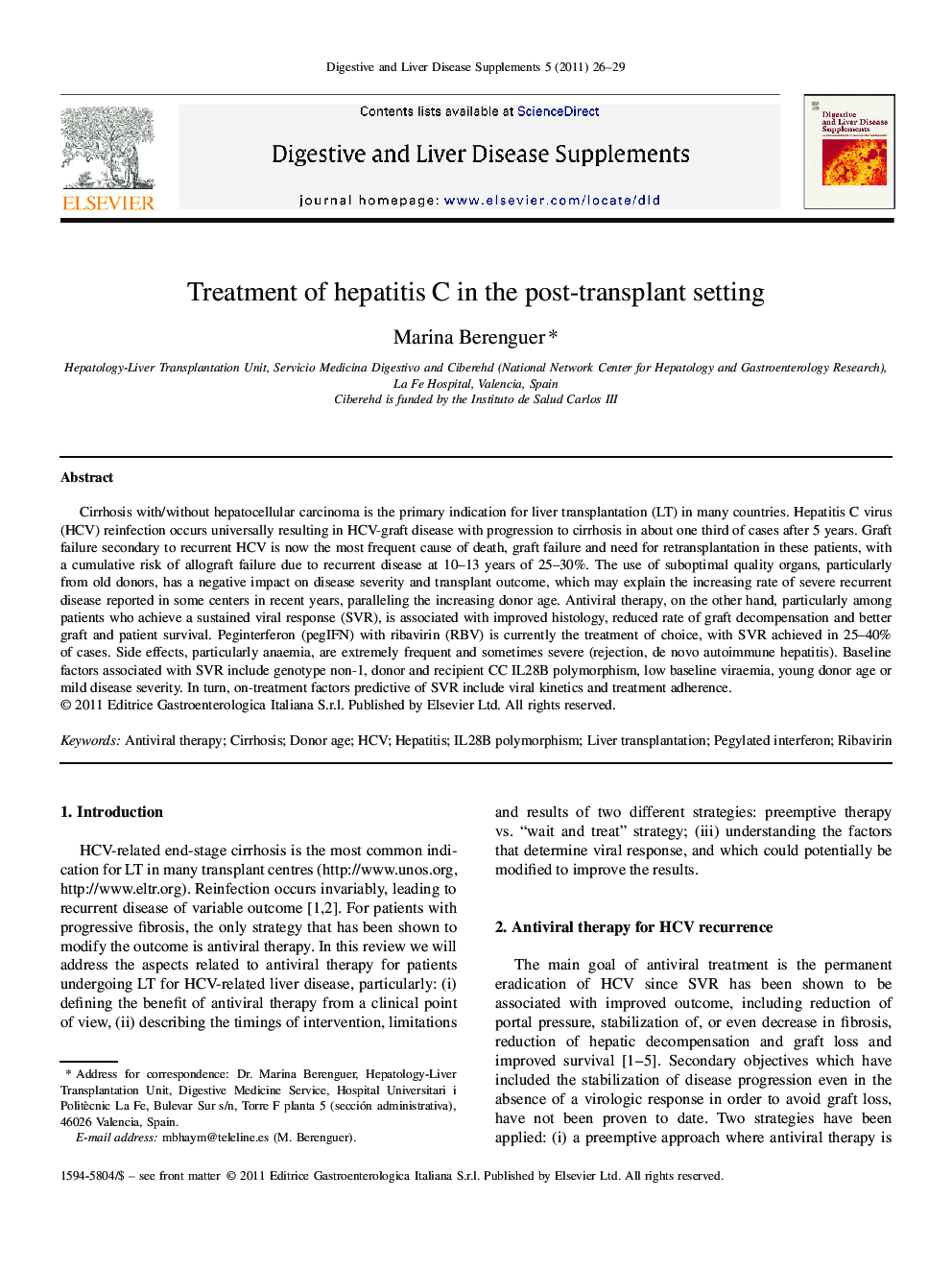| کد مقاله | کد نشریه | سال انتشار | مقاله انگلیسی | نسخه تمام متن |
|---|---|---|---|---|
| 3286986 | 1589927 | 2011 | 4 صفحه PDF | دانلود رایگان |

Cirrhosis with/without hepatocellular carcinoma is the primary indication for liver transplantation (LT) in many countries. Hepatitis C virus (HCV) reinfection occurs universally resulting in HCV-graft disease with progression to cirrhosis in about one third of cases after 5 years. Graft failure secondary to recurrent HCV is now the most frequent cause of death, graft failure and need for retransplantation in these patients, with a cumulative risk of allograft failure due to recurrent disease at 10–13 years of 25–30%. The use of suboptimal quality organs, particularly from old donors, has a negative impact on disease severity and transplant outcome, which may explain the increasing rate of severe recurrent disease reported in some centers in recent years, paralleling the increasing donor age. Antiviral therapy, on the other hand, particularly among patients who achieve a sustained viral response (SVR), is associated with improved histology, reduced rate of graft decompensation and better graft and patient survival. Peginterferon (pegIFN) with ribavirin (RBV) is currently the treatment of choice, with SVR achieved in 25–40% of cases. Side effects, particularly anaemia, are extremely frequent and sometimes severe (rejection, de novo autoimmune hepatitis). Baseline factors associated with SVR include genotype non-1, donor and recipient CC IL28B polymorphism, low baseline viraemia, young donor age or mild disease severity. In turn, on-treatment factors predictive of SVR include viral kinetics and treatment adherence.
Journal: Digestive and Liver Disease Supplements - Volume 5, Issue 1, December 2011, Pages 26-29